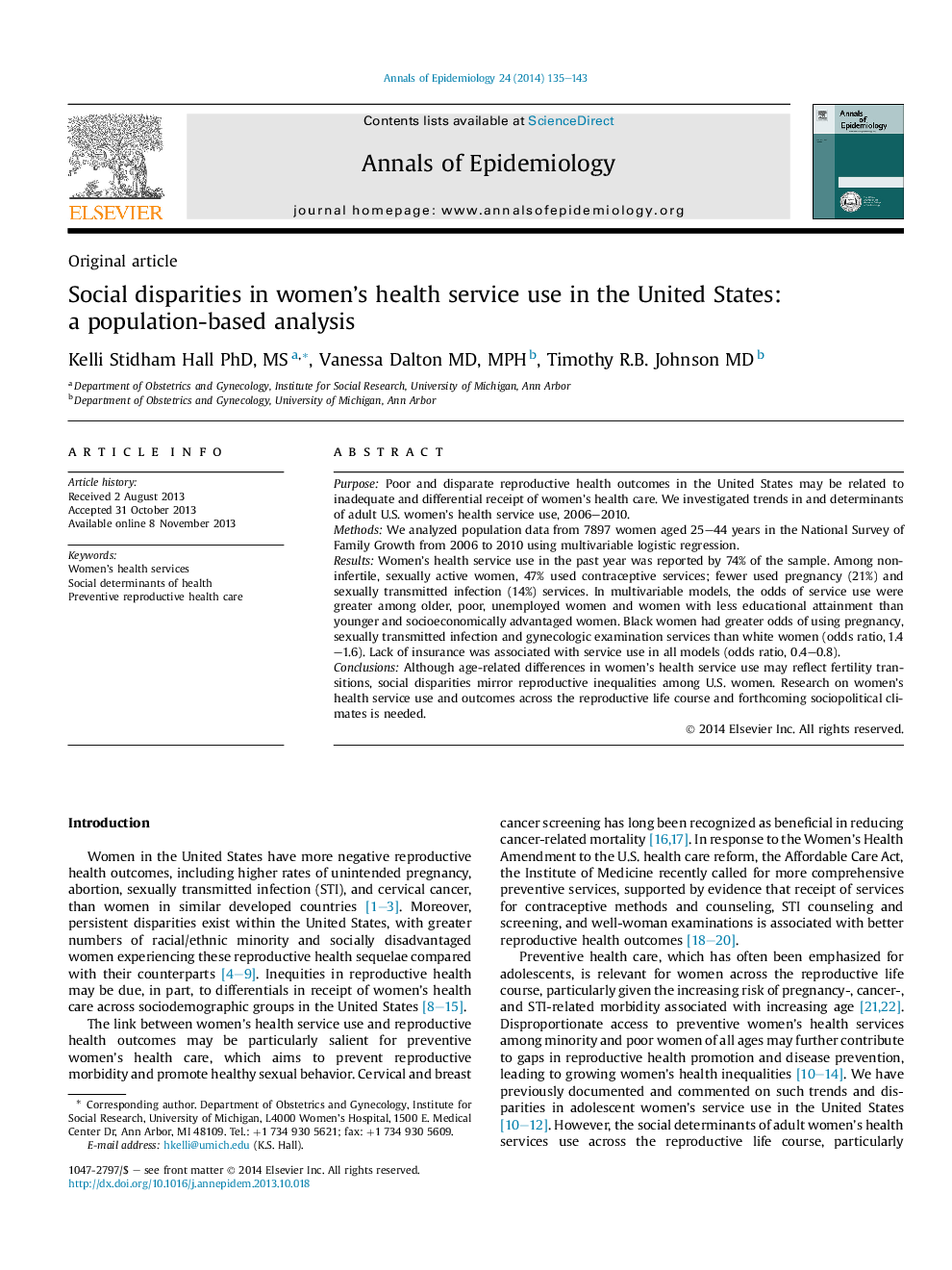| Article ID | Journal | Published Year | Pages | File Type |
|---|---|---|---|---|
| 3444325 | Annals of Epidemiology | 2014 | 9 Pages |
PurposePoor and disparate reproductive health outcomes in the United States may be related to inadequate and differential receipt of women's health care. We investigated trends in and determinants of adult U.S. women's health service use, 2006–2010.MethodsWe analyzed population data from 7897 women aged 25–44 years in the National Survey of Family Growth from 2006 to 2010 using multivariable logistic regression.ResultsWomen's health service use in the past year was reported by 74% of the sample. Among noninfertile, sexually active women, 47% used contraceptive services; fewer used pregnancy (21%) and sexually transmitted infection (14%) services. In multivariable models, the odds of service use were greater among older, poor, unemployed women and women with less educational attainment than younger and socioeconomically advantaged women. Black women had greater odds of using pregnancy, sexually transmitted infection and gynecologic examination services than white women (odds ratio, 1.4–1.6). Lack of insurance was associated with service use in all models (odds ratio, 0.4–0.8).ConclusionsAlthough age-related differences in women's health service use may reflect fertility transitions, social disparities mirror reproductive inequalities among U.S. women. Research on women's health service use and outcomes across the reproductive life course and forthcoming sociopolitical climates is needed.
